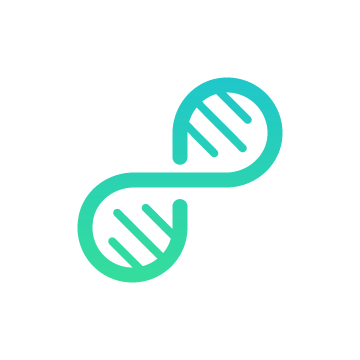Mock sample for your project: Lumminary API
Integrate with "Lumminary API" from lumminary.com in no time with Mockoon's ready to use mock sample

Lumminary API
lumminary.com
Version: 1.0
Speed up your application development by using "Lumminary API" ready-to-use mock sample. Mocking this API will allow you to start working in no time. No more accounts to create, API keys to provision, accesses to configure, unplanned downtime, just work.
It also improves your integration tests' quality and reliability by accounting for random failures, slow response time, etc.
Description
Introduction
The Lumminary API was built to allow third parties to interact with Lumminary customers and gain access to their genetic data. The Lumminary API is fast, scalable and highly secure. All requests to the Lumminary API take place over SSL, which means all communication of Customer data is encrypted.
Before we dive in, some definitions. This is what we mean by:
|Term|Definition|
|-----------|-----------|
|Third party|A third party (also referred to as "partner" or as "you") is a company which offers services and products using genetic data.|
|Lumminary clients|The Lumminary client (also referred to as "customer") is an individual who has created an account on the Lumminary platform.|
|Lumminary|This is us - our services including the Lumminary platform, the API, the DNA App Store, the DNA Vault, the "Connect with Lumminary" button, and the website in its totality. |
|CWL|This is the acronym for the "Connect with Lumminary" button.|
|dataset|This is the term we use when we refer to a customer's genetic data.|
|Lumminary API|This is a library/module that you can use to integrate your apps with the Lumminary platform.|
|Lumminary toolkit|This is a stand alone application which helps you integrate with Lumminary without writing any code or interacting with the Lumminary API.|
Let's dive in, now.
Overview
Install Lumminary API Client and Toolkit
Obtaining credentials
Query customers authorizations
Query customer genetic data
Submit reports
"Connect with Lumminary" button
API specs
Overview
In order to use Lumminary services, you'll need to install the Lumminary API Client or Toolkit. The Lumminary API Client and Toolkit are available in multiple programming languages, and we also provide a sandbox environment which you can use for integration and tests.
There are a couple of differences between the API Client and the Toolkit. Mainly, it's about the ease of use for integration. The Toolkit is basically a stand-alone application that facilitates the integration with the Lumminary API without the need to modify your already existing code.
You use the Lumminary API Client when you want to integrate it inside your own application. This means it gives you full flexibility regarding the integration into your own workflow.
You use the Lumminary Toolkit for an integration where the Toolkit is placed alongside your own application. You can use the Toolkit from the CLI - for example, to run a cronjob that processes incoming orders. The Toolkit uses the Lumminary API Client.
Install Lumminary API Client and/or Toolkit
We provide the Lumminary API Client and Toolkit in multiple programming languages - default are PHP (minimum version 7.0), Python2.7 and Python3. However, if you need them in another language (Java, Obj-C, JavaScript, C#, Perl, CURL), please contact us.
How to install the Lumminary API Client
PHP example:
The PHP Lumminary API Client is available at: https://github.com/Lumminary/lumminary-api-client-php
If you are already using Composer, you can import the project by adding the following to your composer.json
| Error Id | Error Message |
|:-----------------:|:---------------------------------------------------------------------------------------------|
| 1 | Invalid Security Token |
| 2 | Invalid Access Scopes |
| 3 | Customer refuses your request (this happens when the customer cancels instead of granting access) |
Other APIs in the same category
Transport Department, Tamil Nadu

The Blue Alliance API v3
Information and statistics about FIRST Robotics Competition teams and events.
Authentication
All endpoints require an Auth Key to be passed in the header X-TBA-Auth-Key. If you do not have an auth key yet, you can obtain one from your Account Page.
A User-Agent header may need to be set to prevent a 403 Unauthorized error.

Semantic API
The Semantic API uses concepts which are, by definition, terms in The New York Times controlled vocabulary. Like the way facets are used in the Articles API, concepts are a good way to uncover articles of interest in The New York Times archive, and at the same time, limit the scope and number of those articles. The Semantic API maps to external semantic data resources, in a fashion consistent with the idea of linked data. The Semantic API also provides combination and relationship information to other, similar concepts in The New York Times controlled vocabulary.
Common Service Centre (CSC)
Rajasthan Board of Secondary Education
Medcorder Nearby Doctor API
Health Repository Provider Specifications for HIU
The APIs are organized by the flows - identification, consent flow, data flow and monitoring. They represent the APIs that are expected to be available at the HIU end by the Gateway.
For majority of the APIs, if Gateway has initiated a call, there are corresponding callback APIs on the Gateway. e.g for /consents/hiu/notify API on HIU end, its expected that a corresponding callback API /consents/hiu/on-notify on Gateway is called. Such APIs are organized under the Gateway label.
Gateway relevant APIs for HIUs are grouped under Gateway label. These include the APIs that HIPs are required to call on the Gateway. For example, to request a CM for consent, HIU would call /consent-requests/init API on gateway.
NOTE, in some of the API documentations below, X-HIP-ID is mentioned in header (for example in /auth/on-init). These are the cases, when a particular API is applicable for both HIU and HIP (e.g an entity is playing the role of HRP representing both HIU and HIP). If you are only playing the role of HIP, then only X-HIU-ID header will be sent
Aviation Radiation API
We host a RESTful API to models of cosmic ray induced ionising radiation in the atmosphere. The PARMA or CARI7 endpoints can be used to calculate Effective Dose or Ambient Dose Equivalent at a point.
The Route Dose API calculates the same quantities along a great circle route between two airports using CARI7.
API requests must contain a key "API-Key" in the header (see code samples). Obtain a key from here.
Help us improve the quality of our web APIs by completing our 2 minute survey here.
Amentum Pty Ltd is not responsible nor liable for any loss or damage of any sort incurred as a result of using the API.
Copyright Amentum Pty Ltd 2021.
Karnataka Secondary Education Examination Board, Karnataka
ODN API
government and non profit agencies.
Much of this data originating from independent sources is fused together to create new, and often
powerful, entity level data. The API, in addition to search and autosuggest capabilities for finding datasets,
enables data based comparisons across geographical regions such as states, counties, metropolitan areas,
cities and zip codes using highly vetted data providers such as US Census, BEA, HUD and others. Comparison data
is preformatted for easy and efficient display on a chart, graph or interactive map.
The API also exposes data organized by narrative style questions a human might ask. The questions can
be rapidly found using an autosuggest style index, and then used to directly access all data needed to
thoroughly and authoritatively answer the question. Retrieved data includes time series (temporally aligned),
tabular, map heavy (includes spatial boundaries), and auto generated unstructured descriptive text.
The ODN API does not duplicate API endpoints or services provided by public sector agencies, but rather,
returns context relevant pre-populated REST URLs, when appropriate, so the caller can access data
directly from the source.
The open source API powers OpenDataNetwork.com, an open source
site; the site highlights myriad uses and provides API badges with contextually relevant API example
REST endpoints and documentation pointers.
Finally, we continuously add new dat sources which appear automatically in the API, so if your favorite data
source is not available, check back soon. You can also join us HERE
and receive updates or let us know which data sources you are most interested in.
App Tokens
Registering for and including a Socrata application token
is required for the ODN API. They can be passed either using the app_token parameter
or the X-App-Token HTTP header.
